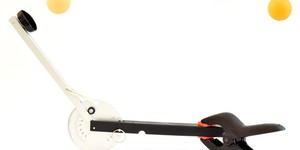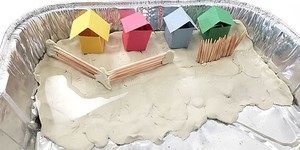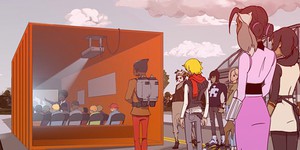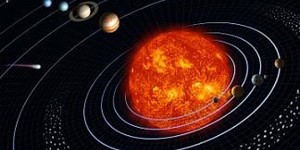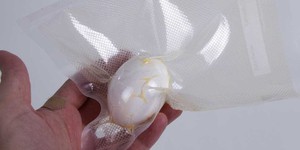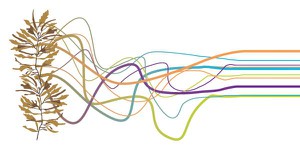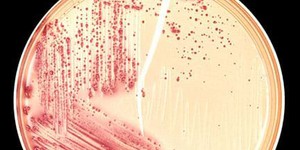Eighth Grade Lesson Plans (126 results)
Science Buddies' eighth grade science projects are the perfect way for eighth grade students to have fun exploring science, technology, engineering, and math (STEM). Our eighth grade projects are written and tested by scientists and are specifically created for use by students in the eighth grade. Students can choose to follow the science experiment as written or put their own spin on the project.
For a personalized list of science projects, eighth graders can use the Science Buddies Topic Selection Wizard. The wizard asks students to respond to a series of simple statements and then uses their answers to recommend age-appropriate projects that fit their interests.
|
Select a resource
Sort by
|
Lesson Plan
Grade: 6th-8th
1 review
Learn about potential and kinetic energy the fun way—by launching ping pong balls across the classroom with a catapult!
Read more
NGSS Performance Expectations:
Lesson Plan
Grade: 6th-8th
1 review
Sea level rise and more-intense storms, both driven by climate change, threaten coastal communities around the globe. In this engineering project, your students will build a model coastline and design a seawall to protect houses from waves as the sea level rises.
Remote learning adaptation: This lesson plan can be conducted remotely. Materials can be distributed for each student to work independently at home on the challenge and report back. Alternatively, students can design a barrier (draw…
Read more
NGSS Performance Expectations:
Lesson Plan
Grade: 4th-8th
Would it be possible to power everything in your classroom using clean, renewable solar power? Inspired by
Global Problem Solvers: The Series,
in this lesson plan, your students will research and design a solar power system for a mobile classroom that can be used after natural disasters or in remote areas without permanent schools.
This lesson is one of three independent lesson plans inspired by Global Problem Solvers: The Series. You can read more about the series and the lesson plans…
Read more
NGSS Performance Expectations:
Lesson Plan
Grade: 6th-8th
Students use water balloons and a length of string to understand how the force of gravity between two objects and the velocity of a spacecraft can balance to form an orbit. They see that when the velocity becomes too great for gravity to hold the spacecraft in orbit, the object escapes the orbit and travels further away from the planet.Engineering Connection
Engineers and scientists make amazingly precise calculations so that a spacecraft's journey is timed exactly to…
Read more
NGSS Performance Expectations:
Lesson Plan
Grade: Kindergarten-8th
Why do humans have two eyes?
In this simple activity students will discover the concept of parallax and start discussing depth perception.
Read more
NGSS Performance Expectations:
Lesson Plan
Grade: 6th-12th
1 review
In this activity, students are asked to create a change in air pressure using a garbage bag and vacuum cleaner, then create an illustration, model or concept map that explains what is happening.
This activity is part of the KQED Engineering Is: Bringing Fish Up from the Deep e-book. The e-book explores the science and engineering principles behind the California Academy of Sciences' portable decompression chamber, and includes videos,…
Read more
Lesson Plan
Grade: 6th-8th
1 review
These lessons use open-ended exploration to introduce students to biopolymers and the chemistry behind cross-linking. Students will draw inspiration from biology and use authentic scientific practices to design and create colorful string creations from a natural polymer, alginate.
Learning Objectives
Students will:
Engage in authentic science practices through open-ended exploration.
Create a string using polymers harvested from living algae.
Manipulate the properties of a…
Read more
Lesson Plan
Grade: 6th-12th
With a few guidelines and some innovative thinking, we can design spaces to have sufficient light and be energy-efficient.
Read more
Lesson Plan
Grade: 6th-8th
Students explore adaptations by researching how animals, plants, and bacteria change based on their environment. They grow bacterial colonies in various environments and hypothesize how each environment will affect the cell culture size and color. After a day of pre-growth, the culture is spun down in a centrifuge and the cell pellet is analyzed. Finally, students research bacteria adaptations that allow them to survive in extreme environments then brainstorm how the…
Read more
NGSS Performance Expectations:
Lesson Plan
Grade: 6th-8th
Students use ultrasonic sensors and LEGO© MINDSTORMS© EV3 robots to emulate how bats use echolocation to detect obstacles. They measure the robot's reaction times as it senses objects at two distances and with different sensor threshold values, and again after making adjustments to optimize its effectiveness. Like engineers, they gather and graph data to analyze a given design (from the tutorial) and make modifications to the sensor placement and/or threshold…
Read more
NGSS Performance Expectations:
|
Explore Our Science Videos
Underwater Color Bursts – STEM Activity
Explore Enzyme Activity!
3D Print a Drone Frame



